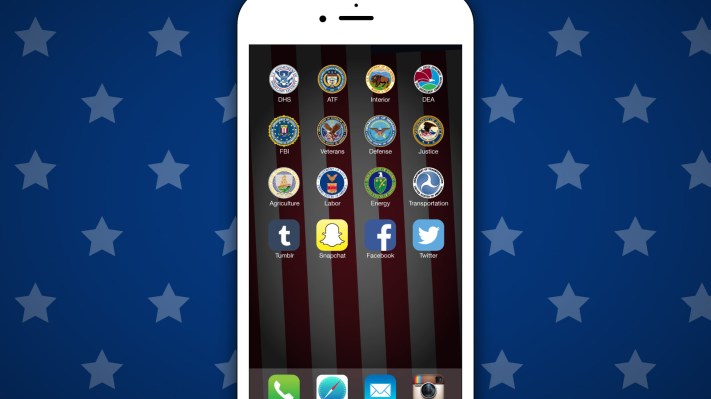Editor’s note: Anne Altman is the general manager of IBM U.S. Federal and Government Industries.
Applications that simply deliver information can be useful, but government agencies are now pushing user engagement to new heights. With 173 million people in the U.S. owning smartphones, citizens are continuously equipped with an Internet connection, GPS functionality and a digital camera.
In fact, the mobile phone has evolved from a simple voice device to a multimedia communications tool capable of uploading and downloading data, text, audio and video while also functioning as a global positioning system, wallet, FM radio, television, alarm clock, thermometer, address book, newspaper, camera and more. Enterprise government apps have the opportunity to take advantage of these basic smartphone attributes.
To help balance workforce productivity with security and compliance risks, just about every agency is looking to set up their own internal app stores to provide access to mobile devices that are issued and managed by the government. Access to the information on these devices is closely monitored and regulated to protect against unauthorized access and apps that could pose a security risk.
As the federal government warms to the idea of bring your own device (BYOD) policies, agency administrators must ensure security and address stringent procurement and policy guidelines.
Whether collecting phone or text logs or location data, one of the initial challenges for federal IT managers will be to ensure the security of their agency’s infrastructure for the increasing number of diverse devices entering the network and accessing this data. They must also focus ways to separate the management and monitoring of job-specific information versus personal content.
Agencies must also focus on app-development strategies to create job- or role-specific apps that not only make it simpler to support compliance requirements, but also encourage use that translates into greater productivity — a key goal of any enterprise mobile initiative. But, agencies don’t have to start from scratch.
Sometimes, reinventing the wheel with your own app might be the wrong way to go, especially if there are familiar and preferable apps already available to your audience that accomplish a similar goal. With any app-development strategy, the user experience must be a focal point. Being open to ideas and engaging with other departments in the design and functionality of the app will be key.
Hackathons or other events can also bring developers and designers together to work on creative solutions to civic challenges. These events often encourage developers to create applications, either for use by the public, or to help government employees solve specific challenges.
Open data and mobile apps are changing the government-citizen relationship. Creative ideas like 311 apps and mobile public transportation payment systems, along with a movement toward open and transparent data, have spawned a new era of government-citizen interaction.
Putting open data and mobile technology to use, IBM recently announced a humanitarian initiative with the government of Sierra Leone to use SMS and voice calls with a citizen and engagement and analytics system to enable citizens to report Ebola issues.
In the U.S., agencies are making use of new mobile innovations, as well. Some examples include a MyTSA app that tracks security wait times at airports, as well as an app that makes it easier for small businesses to apply for licenses and registrations at the Small Business Administration. The Federal Emergency Management Agency (FEMA) mobile app includes disaster safety tips, an interactive emergency kit list, storable emergency meeting locations, and a map with open shelters and open FEMA Disaster Recovery Centers (DRCs).
.
With the right app, Department of Agriculture food inspectors can replace clipboards and laptops with tablets capable of recording and processing complex safety data. And a cache of yet-to-be-developed medical apps are expected to transform the healthcare landscape at government hospitals across the country.
One untapped resource is the 500 million public tweets sent every day. It’s a virtual town hall of people sharing their opinions and preferences. That tsunami of 140-character messages spans the range of human interests and activities — from raves about recent purchases to exhortations to rally behind social causes.
Think about that from a federal agency perspective. You’re the U.S. Forest Service and you start seeing indicators for wildfires. Or you’re the National Park Service and you get early indicators of crowded campgrounds based on tweets. The potential here is endless.
Navigating this land of mobile and social app development can be a challenge, even for government agencies with sizeable budgets and plenty of talented resources. After overcoming the hurdles of planning, development and testing an app, agencies still have to decide how to launch, maintain and drive adoption.
To help spur innovation in this area, we are encouraging and working with the ecosystem that supports the federal government — business partners, academia and entrepreneurs. The goal is to drive rapid development of mobile and web apps that can be built and delivered on the cloud using open data and innovation to solve real-world problems and enhance forms of citizen engagement.
Increased app development collaboration among agencies will accelerate government-wide expertise in mobile, increase focus on the user experience, and prompt agencies to rethink the way data and digital content is created and shared in a wide variety of citizen-centric services.
